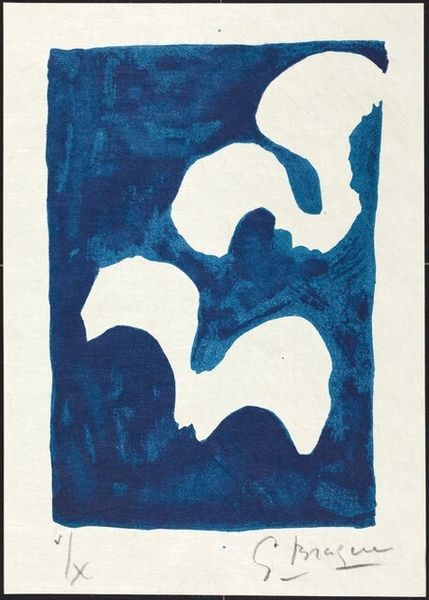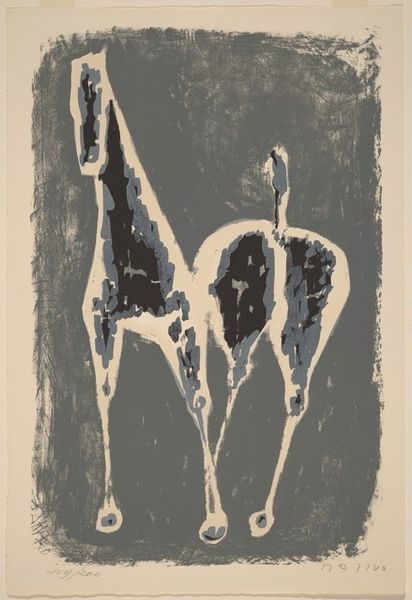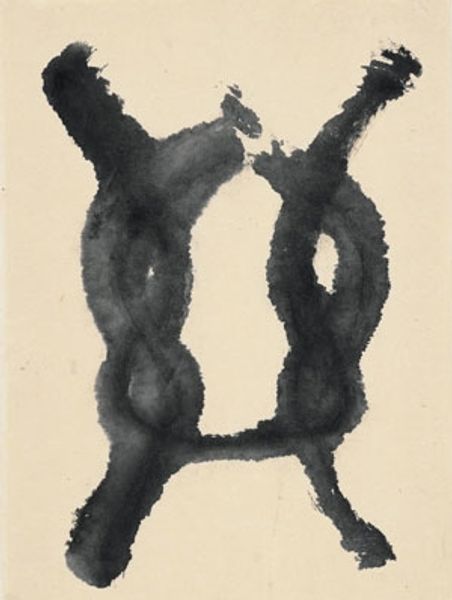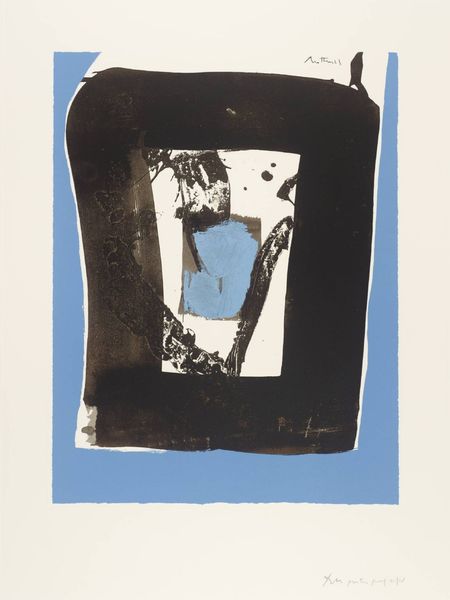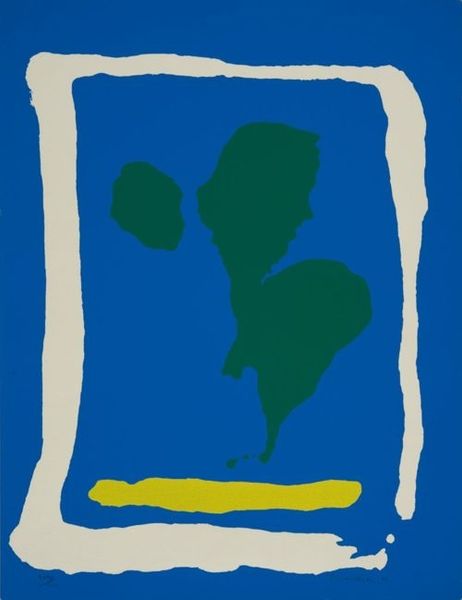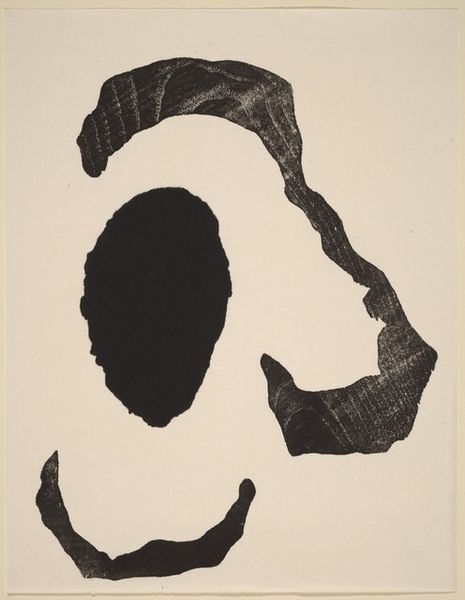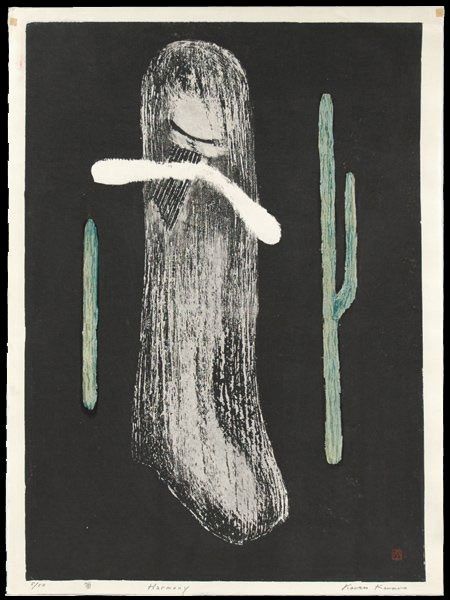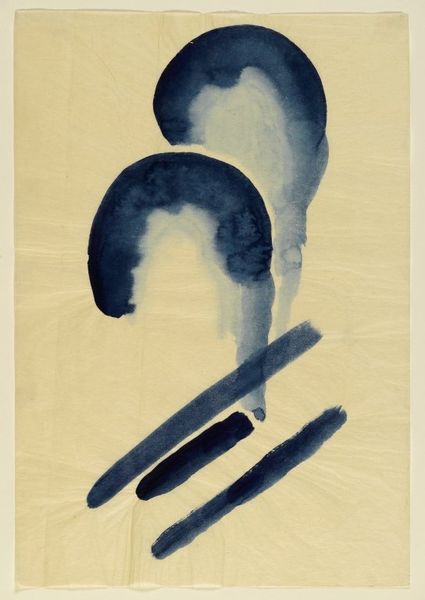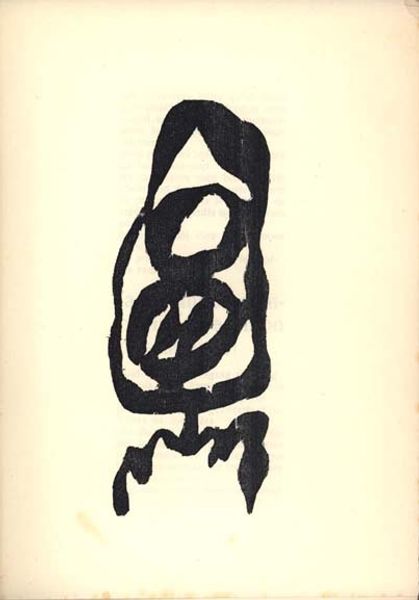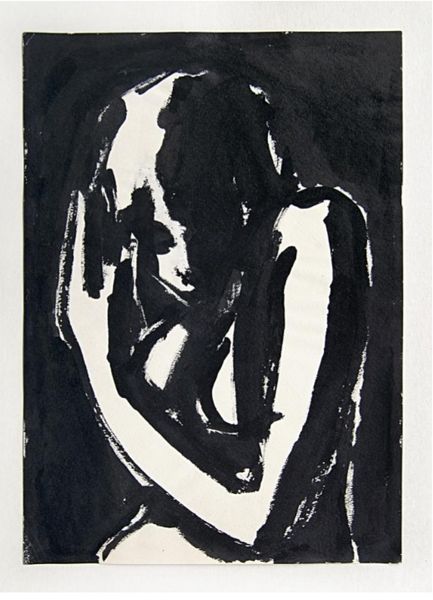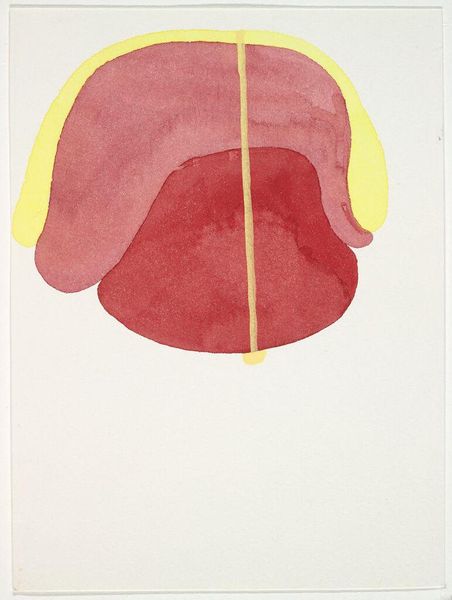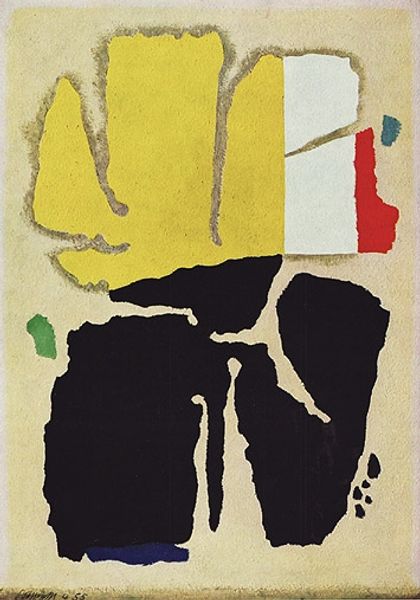
We Were So Close That Nothing Used to Stand Between Us (from the Autumn series)
0:00
0:00
acrylic-paint
#
postmodernism
#
caricature
#
acrylic-paint
#
form
#
flat colour
#
geometric
#
abstraction
#
line
Copyright: Vasile Dobrian,Fair Use
Editor: Here we have Vasile Dobrian’s piece titled *We Were So Close That Nothing Used to Stand Between Us,* part of the Autumn series, and created with acrylic paint. It’s very simple, almost like a stylized emblem, and I’m immediately drawn to the relationship between positive and negative space. What story do you think this work is trying to tell? Curator: That’s an insightful observation! I think Dobrian is exploring the cultural symbolism embedded in seemingly simple images. The silhouette of the leaf acts almost like a stage, highlighting what’s missing, the absent figures. I see this absence as a reflection of postmodern anxiety about connection. How do public narratives, or even artistic institutions, shape our understanding of intimacy and loss? Does this feel intentionally naive, considering its potentially critical undertones? Editor: It does have a childlike quality, with the flat colors and basic shapes. Maybe it's commenting on how societal expectations simplify or even infantilize relationships? I also notice that the leaf is brown, suggesting decay. Curator: Exactly! The "autumn series" context is vital. Think about what autumn signifies culturally. It is associated with decline, loss, and endings. So, placing this absent embrace within that framework… it's loaded. What's fascinating here is Dobrian uses this visual vocabulary to question our cultural scripts around relationships. Are we so consumed by how relationships *should* look, that we overlook the complex reality? And who gets to define these norms? Editor: It’s interesting to consider how the work invites us to reflect on these broader socio-political norms embedded in representations of love. I had initially seen something very personal and introspective. Curator: And that initial response is valid! Dobrian is really good at creating these kinds of tensions—inviting a personal reading but always hinting at something much larger. Editor: I’ll definitely consider the societal impact when viewing seemingly intimate themes from now on.
Comments
No comments
Be the first to comment and join the conversation on the ultimate creative platform.
